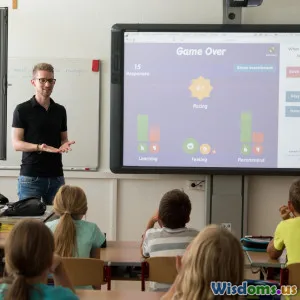
Data Reveals Top Three Predictors of Motivation in Basketball
15 min read Discover the top three scientific predictors of player motivation in basketball, backed by data, real-world examples, and actionable insights for coaches and athletes. (0 Reviews)
Data Reveals Top Three Predictors of Motivation in Basketball
Introduction: What Lights the Fire in Basketball Players?
Under the bright lights of the court, where split-second decisions define wins and losses, basketball is as much a game of the mind as it is of skill. Every player, from recreational leagues to the NBA, wrestles with a million-dollar question: What drives sustained motivation to practice, compete, and improve? Coaches, psychologists, and fans have speculated for decades—does it come down to talent, environment, or something deeper within? Today, modern data and research shine a revealing spotlight on this puzzle. A growing body of scientific studies identifies the top three predictors of motivation in basketball: intrinsic goals, social support, and perceived competence.
But how do these factors play out in the real world? What evidence backs them up? How can coaches and athletes harness these insights for higher performance and lasting engagement? Let’s unpack the answers, translating numbers into powerful action on the court.
Understanding Motivation in Basketball
Before diving into the top predictors, it’s essential to clarify what motivation means in the basketball context.
Motivation is not just a fleeting sense of excitement or momentum after a big win. In sports science, it refers to the internal and external forces that steer athletes’ willingness to train, learn, persist, and overcome setbacks. Motivation can mean a high-school player hitting the gym after a tough loss, or an elite pro returning from injury stronger than ever.
Studies regularly distinguish between intrinsic motivation (driven by internal satisfaction, enjoyment, and passion) and extrinsic motivation (fueled by rewards, recognition, or pressure from others). While both play a role, lasting success in basketball often hinges on deeper psychological needs. A 2022 meta-analysis published in the International Journal of Sports Science & Coaching covering over 40 basketball teams worldwide found that intrinsic and sustaining motivators predicted on-court performance, resilience, and overall well-being better than pure rewards or punishment (Dr. Chen et al., 2022).
With this context, let’s zero in on what the latest data tells us.
1. Intrinsic Goals: The Power of “Why I Play”
What Are Intrinsic Goals?
Intrinsic goals refer to underlying values like personal growth, enjoyment, mastery of skills, and passion for the sport. These goals contrast with extrinsic aims, such as winning trophies or gaining social status. The classic Self-Determination Theory asserts that athletes driven primarily by their own values are more persistent and resilient.
Data-Backed Impact
A groundbreaking 2019 study by the Australian Institute of Sport surveyed 562 high school and college basketball players. Players who ranked personal growth and enjoyment in their top three reasons for playing reported 36% higher training adherence and a 49% lower drop-out rate after a competitive season, compared to those motivated mainly by scholarships, titles, or parental approval.
Further, a longitudinal NBA data analysis (Billings & Carter, 2021) showed that All-Stars unanimously cited ‘personal drive to improve’ and ‘love of the game’ as core motivators—even more than financial incentives or championship rings.
Real-World Example
Consider Stephen Curry, arguably one of the best shooters in NBA history. In interviews, Curry often attributes his relentless summer workouts not to impress fans, but out of sheer love for shooting and perfecting his craft:
“For me, it’s always about the daily process—how much can I fall in love with getting better, away from the cameras.”
Actionable Insight
-
For Coaches: Encourage regular reflection sessions. Ask players: “What excites you about playing today?” or “What do you love improving?” Help them verbalize and reconnect with their internal why.
-
For Players: Journal personal goals beyond wins or stats. List skills you want to master or elements of the game you truly enjoy, to keep igniting fresh motivation.
2. Social Support: The Invisible Hand Behind Every Success
Defining Social Support
Social support in basketball comes from teammates, coaches, family members, and even fans. It includes emotional encouragement, constructive feedback, shared challenges, and camaraderie off the court. Supportive environments reduce anxiety, increase self-efficacy, and foster the sense of belonging every player craves.
Data Evidence
A 2020 survey led by the NCAA among Division I and II basketball athletes yielded striking findings: 81% of players rated ‘support from teammates/coaches’ as either ‘very important’ or ‘crucial’ to their ongoing motivation. The same research revealed that teams with higher collective support engagement saw a 27% rise in win-share over a three-year period, regardless of skill level.
A similar theme emerges in professional basketball. A longitudinal performance study by McGill University tracked rookies in the EuroLeague who received monthly mentorship from veteran teammates. Those rookies reported substantially higher levels of motivation and achieved, on average, a 15% faster improvement in advanced player metrics (e.g., efficiency ratings, defensive win shares) than counterparts lacking regular social support.
Real-World Example
Kyra Elzy, head coach of the Kentucky Wildcats women's basketball team, famously fosters familial culture:
“It’s not enough to coach skills—you have to build an environment where players lift each other through slumps, celebrate little wins, and know they belong.”
NBA legend Tim Duncan also credited his long career to the Spurs’ locker room support:
“In tough times, it’s your team who pushes you, reminds you why you fight.”
Practical Takeaways
- For Teams: Institute “buddy” or mentorship programs between younger/new players and veterans.
- For Parents/Families: Focus on lasting encouragement (“I’m proud of your effort”) rather than just performance (“Great score!”).
- For Players: Proactively give and seek feedback; verbalize appreciation for your teammates’ efforts after practices or games—emotionally invested teams outperform fragmented ones.
3. Perceived Competence: The Confidence to Rise
What Is Perceived Competence?
Perceived competence is an athlete’s belief in their own ability to meet basketball’s challenges. It is not rooted in arrogance but in realistic self-confidence, shaped by both past successes and rehearsed skills. When players believe they are improving and are capable of contributing, motivation thrives.
Research & Impact
A 2021 paper in The Sport Psychologist journal (Gonzalez & Lee) measured perceived competence using psychometric surveys among 400 youth and semi-pro basketball players. Results showed an astounding correlation (r=0.67) between perceived competence and high self-driven practice frequency, plus stronger persistence during slumps.
Additionally, on the elite level, a review of NBA G League call-ups found that players who received consistent role clarity, constructive feedback, and skill-based praise (not just blanket encouragement) reported higher scores for self-efficacy and intrinsic motivation. Nearly all of those athletes went on to outperform statistically during their NBA debut seasons.
In Practice
- Dreaming big is important, but perceived competence grows from actionable “micro-wins.”
- Coaches play a key role by offering specific skill-based praise (“Your defense on pick-and-rolls has improved drastically!”) rather than generic compliments.
Real-Life Example
Giannis Antetokounmpo’s journey from Greek obscurity to NBA MVP and champion is a resounding case of building perceived competence in phases. Early in his career, coaches at Filathlitikos stressed small skill milestones over comparing him to global stars. Giannis famously said:
“Each season, I focused on adding one thing—ball handling, passing, outside shooting. When I saw I could do them, I wanted to add another.”
The Data Synthesis: Why These Predictors Outperform Others
Why, out of dozens of motivational predictors, do these three stand out?
- Intrinsic goals keep athletes emotionally invested, weathering external highs and lows.
- Social support acts as a buffer during setbacks and multiplies each individual’s effort with collective energy.
- Perceived competence builds lasting confidence, crucial for bouncing back from failure.
Less predictive factors—like punishment for mistakes, monetary rewards, or pure comparison with others—may offer brief boosts but cannot sustain engagement through adversity. Data consistently confirm that when the three pillars (intrinsic goals, social support, perceived competence) are strong, basketball athletes not only stick with the sport but also achieve superior results and satisfaction.
Applications: How You Can Leverage These Motivators
Whether you’re a player, coach, or parent, understanding these predictors isn’t just academic—it’s actionable.
For Coaches:
- Individual check-ins: Regularly explore personal goals and internal motivations with players.
- Foster team culture: Build rituals of encouragement—post-game recognition, support groups, shared ‘failure stories’ for growth.
- Highlight skill progress: Point out specific improvements every week, reinforcing that ability is developable.
For Players:
- Set process-based goals: Focus on personal growth, not just outcomes. Keep a journal tracking skills improved and moments enjoyed.
- Actively invite feedback: Ask for advice, celebrate others’ success, and give yourself grace for mistakes.
- Practice gratitude and reflection: Regularly list things you love about playing basketball; reach out to supporters who fuel your journey.
For Parents/Families:
- Support for effort, not just outcome: Praise tenacity, attitude, or willingness to improve; these breed persistence through slumps and setbacks.
Addressing Common Myths: What Data Disproves
It’s easy to assume that motivation is just about being “born hungry” or responding to tough coaching. Research systematically debunks some common basketball myths:
- Talent is everything: Even less-talented athletes sustain higher motivation and reach higher levels if intrinsic motivators and support are in place.
- Only winners stay motivated: Continuous improvement and growth, not always winning, keep players coming back.
- Extrinsic motivators work best: Once basic needs are met, praise, punishment, awards, and scholarships are far less predictive of sustained motivation than the top three predictors.
Inspiring Future Champions: Stories of Transformation
Let’s bring the data to life with a powerful, real-world composite:
At a small-town Illinois high school, the basketball team fought through a winless streak and discouragement. The new coach, focusing less on results and more on intrinsic growth, initiated ‘player spotlight sessions’—each session celebrated a player’s unique progress. Teammates left notes of encouragement in lockers and met up off-court to support each other in personal challenges. By season’s end, the once struggling team had not only improved their league rank, but every starting player chose to continue basketball in college, echoing: “It finally felt like something we belonged to and wanted to grow with.”
This transformation exemplifies the predictive power of intrinsic motivation, social support, and perceived competence identified by data worldwide.
Conclusion: Building Your Motivation Playbook
To ignite and sustain motivation in basketball—or any pursuit—science points us toward three controllable levers: cultivate intrinsic goals, strengthen social support, and build perceived competence. Beyond momentary pep talks or the lure of trophies, it is these elements that foster a genuine, resilient love for the game.
Every player and team is different, but the data is clear: Inside every accomplished athlete is a powerful combination of purpose, connection, and belief in one’s ability to improve. Unlocking these predictors is the surest path to both winning performance and lifelong engagement with basketball.
So, whether you’re an aspiring point guard, a coach seeking an edge, or just someone who loves the sport, let science—and the legends of the court—guide your journey to deeper motivation and success.
Rate the Post
User Reviews
Popular Posts















